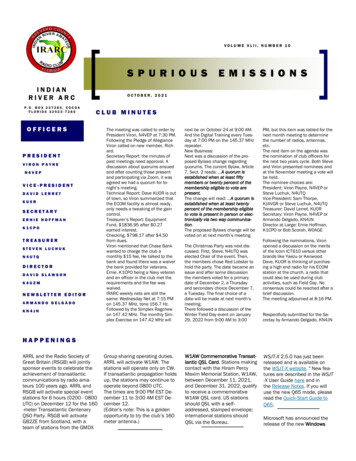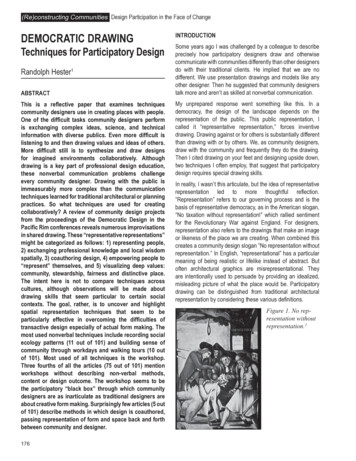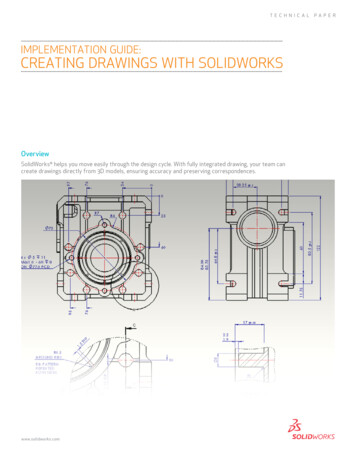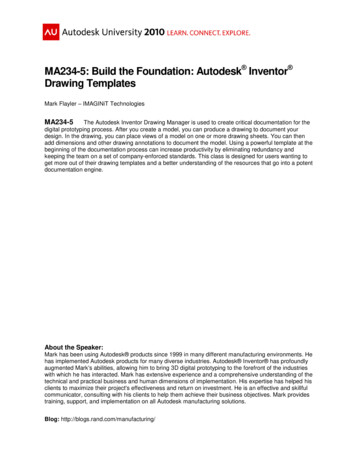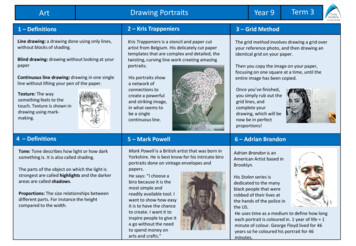![Drawing Dynamic Hands Burne Hogarth[English] - Internet Archive](/img/31/drawing-dynamic-hands-burne-hogarth-english.jpg)
Transcription
DRAWINGDYNAMICHANDSBY BURNE HOGARTH
CONTENTSINTRODUCTION 81. FORMS AND STRUCTURES 102. PROPORTIONS AND MEASUREMENTS 243. ANATOMY AND STRUCTURE 404. ANATOMICAL LANDMARKS AND SURFACE STRESS 525. ACTIONS, FUNCTIONS, LIMITS OF MOVEMENT 646. FORESHORTENING 827. INVENTING HANDS IN ACTION 948. THE HAND AS AN INSTRUMENT 1029. COMMUNICATION AND GESTURE 11410. AGING 12211. HAND BEHAVIOR AND OCCUPATIONS 134BIBLIOGRAPHY 142INDEX 143
INTRODUCTIONIt is an ancient precept that the person whowould be an artist must first learn to draw.Anyone who has ever wished to becomeoffer drawing—indeed would not dareoffer a curriculum without drawing. Thevisualizing capability would be crippled.
2.PROPORTIONS ANDMEASUREMENTSAnyone who has tried to draw the humanfigure has quickly learned that the hand isamong the most complex of the body forms.To draw the hand accurately and with preci sion, you must know how to relate the indi vidual parts to each other and how to unifythe separate elements. A knowledge of pro portions is necessary in art and should beused as a learning stage to new expressiveadventures. This chapter will introduce es sential measuring cues and their use in draw ing the hand in correct proportion. Once theinterrelated measurements are understood.
3.ANATOMYANDSTRUCTUREHopefully you will not be so caughtin the study of the parts that youforget the rhythmic and unifiedwhole. As you go through this chap ter, you’ll see the efficiency, order,and symmetry of the forms of thehand and the integrated way in
4.ANATOMICALLANDMARKS ANDSURFACE STRESSThe artist can truly understand surfaceforms only by knowing their underly ing structures and their form and beity. We are still dealing with anatomyin this chapter, but from the viewpointof dominant surface stress.
5.ACTIONS,FUNCTIONS,LIMITSOF MOVEMENTThe hand is the most complex andvariable form in the human body.No other form can respond withsuch extraordinary range and func tional capability and with such easeand grace. For example, the sepa rate fingers can perform an imthumb, obliquely opposing the four
6.FORESHORTENINGIt is impossible to draw the human hand ac curately and artistically without an under standing of foreshortening, the overlappingof forms seen in spatial recession. Becausethere is scarcely any hand position whichdoes not involve some form seen in deepspace, in order to achieve a threedimensional rather than a flat effect, it is
7.INVENTINGHANDS IN ACTIONThe best hand actions are not necessarilycopied exactly from life. Pictorial logic, de-
8.THE HAND ASAN INSTRUMENT
9.COMMUNICATIONAND GESTUREThe hand i
H(a
.10AGINGThe hand changes radically from in fancy to old age, not only in size,proportion, and structure, but alsoin skin texture, tissue structure, and
.11HANDBEHAVIOR ANDOCCUPATIONSDrawing hands involved in variousoccupations can be either prosaic orexciting. Since the hand is the mostplastic part of the anatomy, it can fitaround or grasp an infinite varietyof shapes in countless positions.Thus an enormous variety of occu pations can involve highly complexuse of the hands. Occupations oftenrequire the use of some kind ofutensil or tool to which the handmust adapt itself. The kind of draw ing one does of the hand working atvarious occupations is determined toa great extent by the instrument thehand must use. In this chapter youwill see how the element of designplays an important part in executingnot only a visually clear but also avisually appealing drawing of thehand involved in an occupation.
INDEX
DRAWINGDYNAMICHANDS
Drawing hands involved in various occupations can be either prosaic or exciting. Since the hand is the most plastic part of the anatomy, it can fit around or grasp an infinite variety of shapes in countless positions. Thus an enormous variety of occu pations can involve highly complex use of the hands. Occupations often
![Drawing the Human Head Burne Hogarth[English] - Internet Archive](/img/29/drawing-the-human-head-burne-hogarth-english.jpg)
